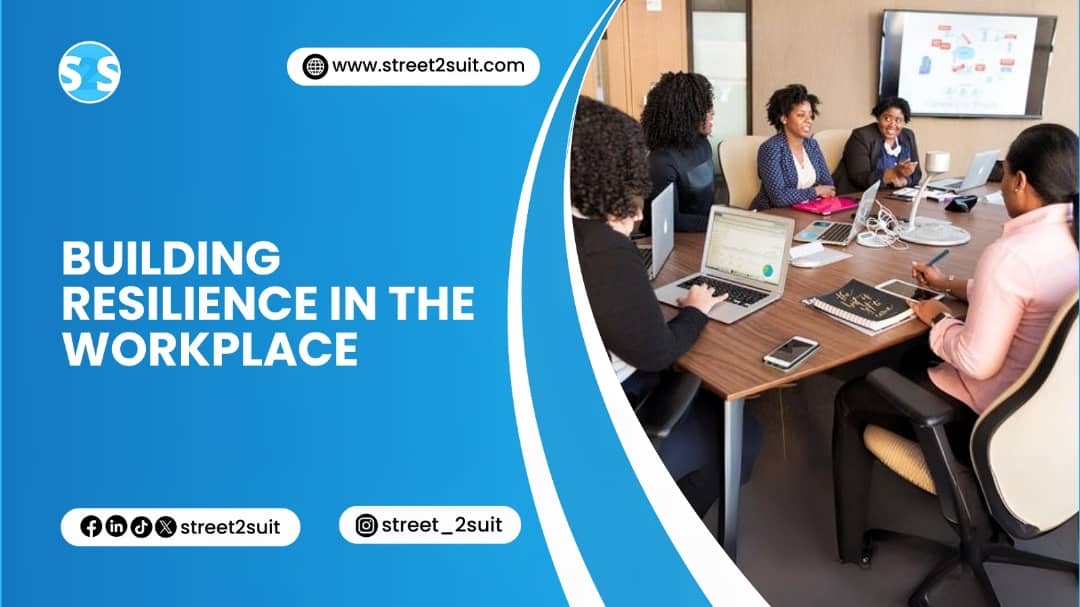Let’s face it, work can be a lot. One moment you’re celebrating a successful project, and the next you’re staring blankly at an email that needs prompt attention. Between tight deadlines, shifting priorities, surprise Zoom meetings, and the occasional crisis over extra tasks, it’s easy to feel overwhelmed.
But what separates those who crumble from those who cope and even thrive under pressure? Resilience.
Resilience isn’t about never feeling stress, it’s about developing the mental, emotional, and professional stamina to bounce back from challenges. And in today’s fast-paced work environment, it’s not just a nice-to-have, it’s essential.
But how? Calm, it’s not rocket science.
Building Resilience in the Workplace
Let’s dive into how you can build and strengthen resilience in the workplace, so you can face every Monday like a champ.
Understand What Workplace Resilience Really Is
Resilience isn’t about having a superhuman ability to shrug off stress with a smile. It’s about adapting in the face of change, recovering from setbacks, maintaining focus under pressure, and doing it all without completely losing your mind.
Think of it as emotional and mental elasticity. The more resilient you are, the quicker you bounce back from office chaos, career hiccups, and team drama.
Build Emotional Awareness
The first step to resilience is recognizing how you feel without judging yourself. Are you frustrated because your idea was dismissed in a meeting? Anxious about an upcoming performance review? Want to scream into a pillow after another 3-hour email thread?
That’s okay. Acknowledging these emotions doesn’t make you weak, it makes you human. Journaling, deep breathing, or even talking to a supportive colleague can help you process emotions instead of bottling them up.
Cultivate a Growth Mindset
Resilient people don’t see failure as the end. They see it as part of the process. Adopting a growth mindset means understanding that abilities and intelligence can be developed. When something goes wrong, instead of thinking “I’m terrible at this,” try reframing it to “I haven’t mastered this yet.” Your mistakes don’t define you, but how you respond to them can.
Set Boundaries Without the Guilt Trip
If resilience had a best friend, it would be boundaries. And we’re not talking about working through lunch again boundaries but real, healthy ones.
Log off when the day ends, the Slack notification can wait. Say no when your plate is already full, you are not a buffet. Take real breaks, and protect your mental energy. Burnout doesn’t make you productive, it makes you miserable. Boundaries are your buffer.
Develop Problem-Solving Muscles
Some days feel like everything that can go wrong does. A resilient employee doesn’t spiral; they shift into problem-solving mode. Ask yourself:
What’s within my control?
What’s the first step I can take right now?
Who can I ask for help?
You don’t need to have all the answers, just the mindset that believes a solution exists and probably doesn’t involve flipping a table.
Strengthen Your Support Network
No one builds resilience in isolation. Having a strong support system at work, whether it’s coworkers, mentors, or your vent buddy makes all the difference. Share your challenges, laugh at the chaos, celebrate the wins no matter how small. A team that supports each other builds collective resilience. Bonus: You’ll feel less like you’re battling workplace dragons solo.
Master the Art of Self-Care
You can’t be resilient if you’re running on fumes. Self-care in the workplace looks like getting enough sleep. Moving your body even if it’s just a lap around the office, eating meals that don’t come exclusively in crinkly wrappers, saying “no” to things that drain you unnecessarily. Self-care isn’t indulgent, it’s maintenance. Like oiling a machine, except the machine is your brain.
Embrace Change, Even If It’s Messy
Workplace change is inevitable – new software, new management, new breakroom coffee. Resilient individuals don’t just tolerate change, they adjust to it with curiosity instead of fear. Practice flexibility by asking questions rather than jumping to conclusions. Staying open to learning and unlearning. Seeing change as an opportunity for growth even if it comes wrapped in chaos.
Keep Perspective
When everything feels like it’s falling apart, take a step back. Will this project meltdown matter in a week? A month? A year? Resilient people don’t sweat the small stuff and when they do, they recognize it’s small stuff. A good sense of humor helps here, too. If you can laugh at the absurdity of a workplace crisis, you’ve already won half the battle.
Celebrate the Bounce-Back
Don’t just wait to celebrate when everything goes perfectly. Celebrate the recovery. That time you bombed a presentation but followed up with a killer email? That’s resilience. When you got rejected from a role and still showed up to work the next day? That’s resilience.
Every time you dust yourself off and keep going, it’s a win. Acknowledge it. You’ve earned it.
Conclusion
The workplace can be wild but you can be wilder. No job is completely stress-free. But with resilience, you can handle the bumps, navigate the plot twists, and still have enough energy to laugh at the irony of having urgent tasks assigned at 4:59 PM.
So, build your bounce-back muscles, get comfortable with discomfort, and remember you’re tougher than that passive-aggressive email. Resilience isn’t about avoiding the storms; it’s about learning to dance in the office rain.
Now go out there, bounce back like a pro, and remind the workplace that you are not to be underestimated
Receive the latest job and career updates in your inbox, every week!


